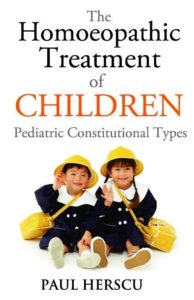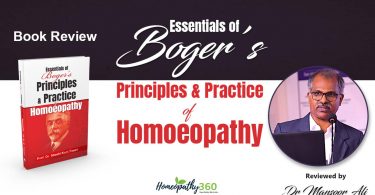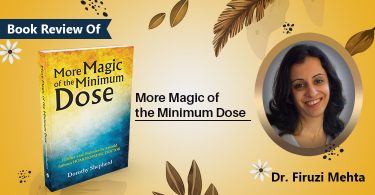 Author: Dr. Paul Herscu
Author: Dr. Paul Herscu
Published by: B. Jain Publishers, New Delhi
ISBN: 978-81-319-0023-9
Reviewed by Julian Winston –
Homeopathy has remained alive for the last 200 years because of its literature. Above all, it is a literate science. Because we look for the symptomology in the words of the patient, the indications for the medicines we give have not changed very much. The sensation that “the top of my head is open and is letting in cold air” (Cimicifuga) is the same- be it said in the office today or in an office 100 years ago.
We have the literature we do because practitioners desired to share their experiences with others. Why have twenty materia medica if they all contain the same information?
Yet, in the last fifty years, not many substantial books have been written. The best (Roberts and Vithoulkas) have been modern language restatements of homeopathic philosophy and
practice. Many others, Panos/ Heimlich and Cummings/Ullman among them, sought to expand on the concept of the “domestic- manual” bringing the older works of Pul te, Hering, Small, and Johnson into a modern light.
For the most part, however, the cu rrent crop of modern homeopathic literature is saying very little new. True, there are books to get people interested in homeopathy, but the majority of
the great works are still reprints of a century ago.
It was, therefore, a pleasure to see this new book by Paul Herscu. There has been no work done on pediatric treatment since Douglas Borland wrote his Children’s Types over 40 years ago, yet, today, a large part of a homeopath’s practice is seeing children. As Paul tells it, “early in my career as a homeopath I was thrown into a busy practice that served hundreds
of children. Overwhelmed by a flood of pediatric cases, I struggled to find the similimum with tools and training that were inadequate to the task.” He had his baptism by fire, and the experience he gained, and writes about, cannot be found in Kent’s Repertory, nor in any materia medica. It is new ground. It is amazing reading, and it is refreshing material. It is not a self-help manual. It is, however, as Paul suggests, a book to be read by both parents and physiciansan” to allow them to work as a team to bring the child to his or her
fullest potential. Paul discusses eight “constitutional” remedies: Calcarea carbonico, Lycopodium, Medorrhil1um, Nairum muriaticum, Phosphorus, Pulsatilla, Sulphur, and Tuberculinum . Each chapter
begins with a narrative account of the remedy, in the Hahnemann schema, beginning with the mental! emotional characteristics, going through all they systems, and ending with the physical generals. There follows a short narrative about the remedy as seen in infants,
an outline of the information presented, and, finally, a list of confirmatory symptoms for each
remedy.
The writing is chock full of information. It was difficult to select a single part to share here, so I chose a part from the Sulphur chapter a part near and dear to my heart: “Their natural curiosity leads them to explore new objects, trying to find ou t how they work, why they
work, and how they can be used. In their curiosity they may tear apart anything in the room. This may seem like Calcarea carbonico behavior, but there is one major difference. With Calcarea carbonico there is a desire to find out why all these things occur, why they are
here, as if from a need to categorize them to know where they fit in the world. This is a small symptom that shows Calcarea carbonica’s anxieties about the unknown and about the future. With Su lphur, however, the desire is to know how things work, how they can be used to advantage, not out of anxiety but out of the natural inquisitiveness that is distinctly human when not hapered by fear.
In sulphur this may border on monomania, although the subject will change from time to time. I rememder treating a boy who would habitually ask questions. Whatever the answer was, his next question was “why?” the answer to this question was followed by scores of “why? why?why?” Many children go through the “why” phase, which is normal. However, in the Sulphur child it often lasts for years, never really ending but rather evolving from asking questions of others to an internalization of curiosity leading them to seek out answers via independent endeavor and study.”





